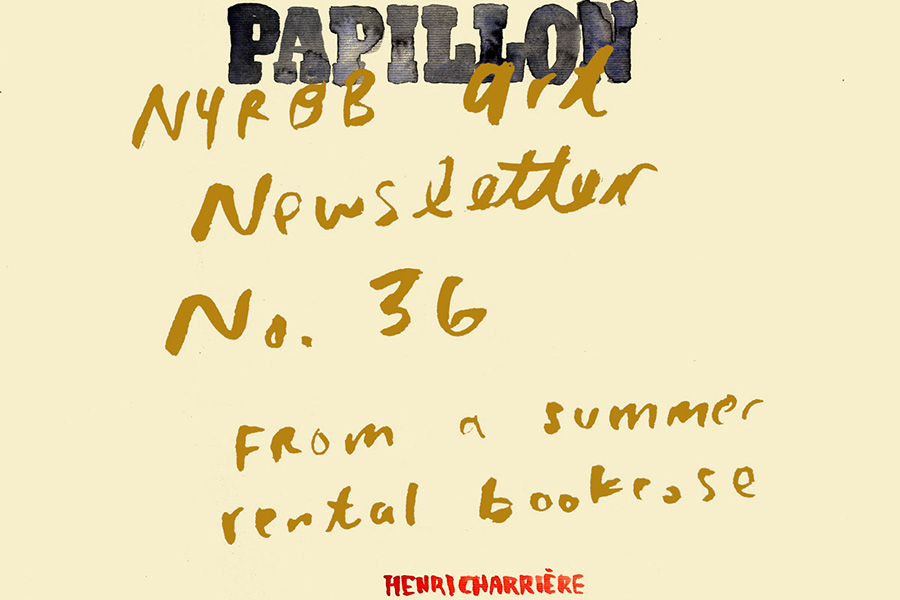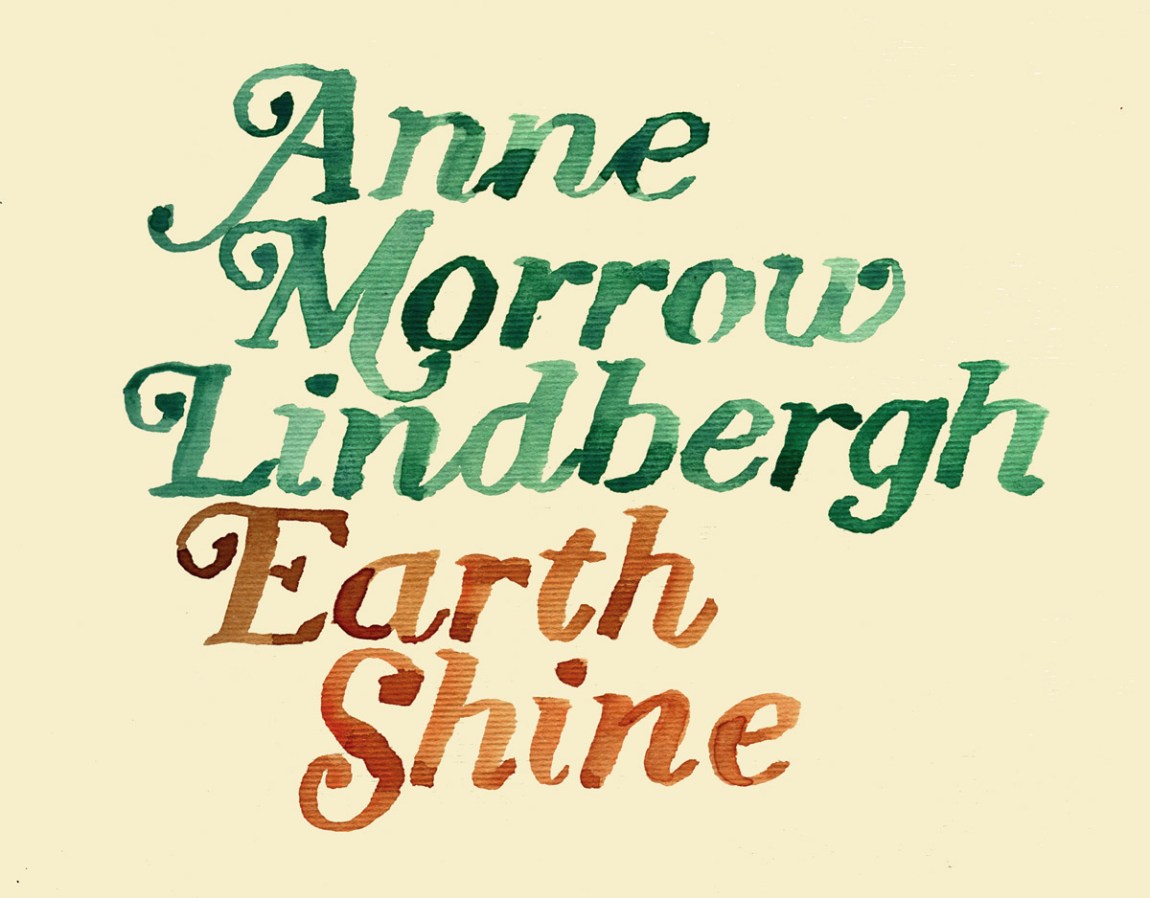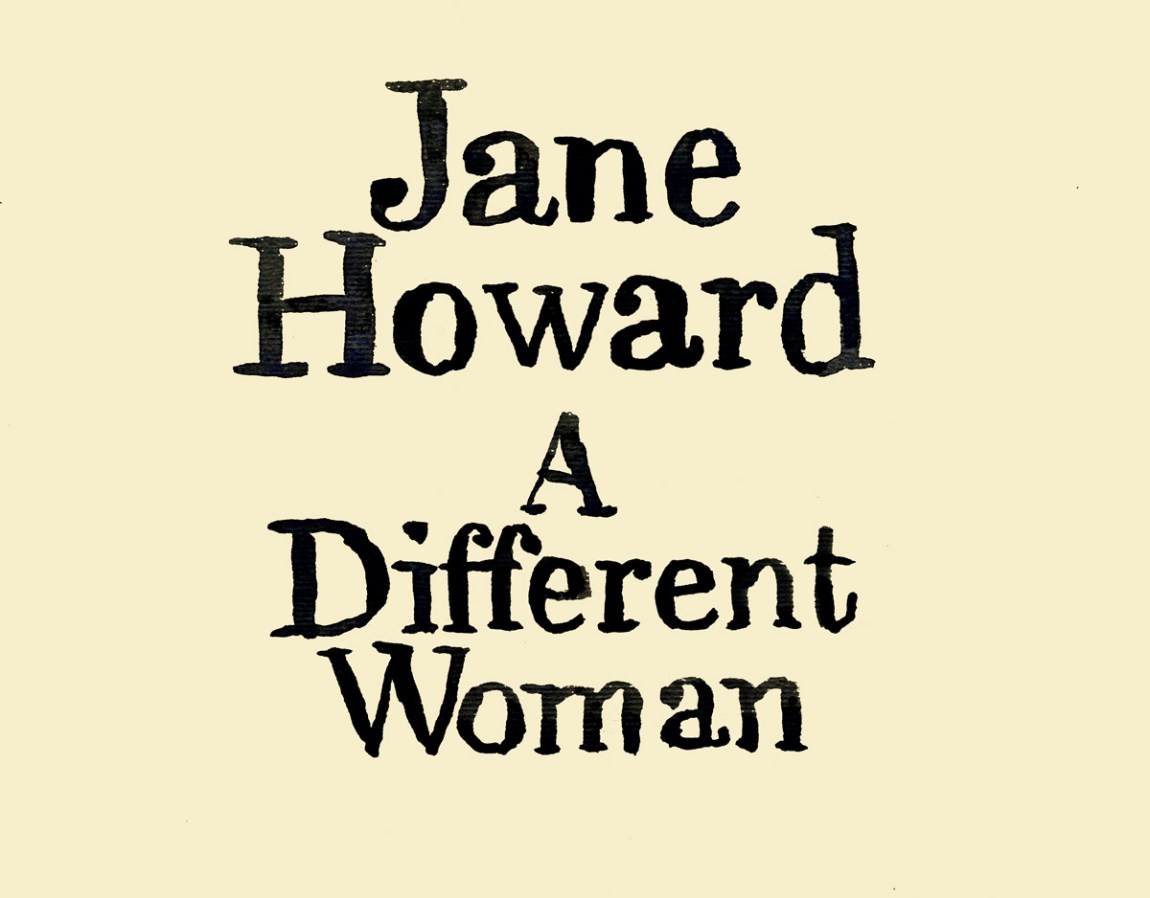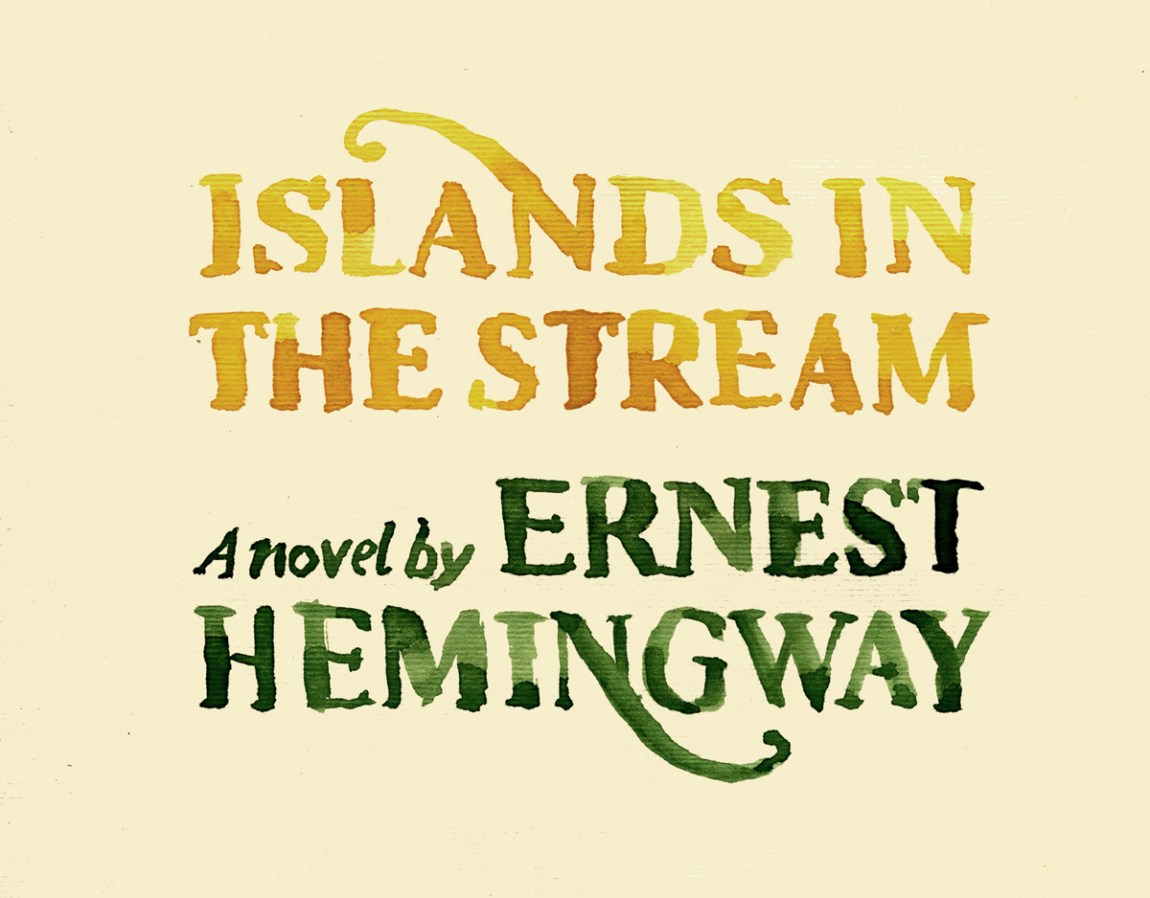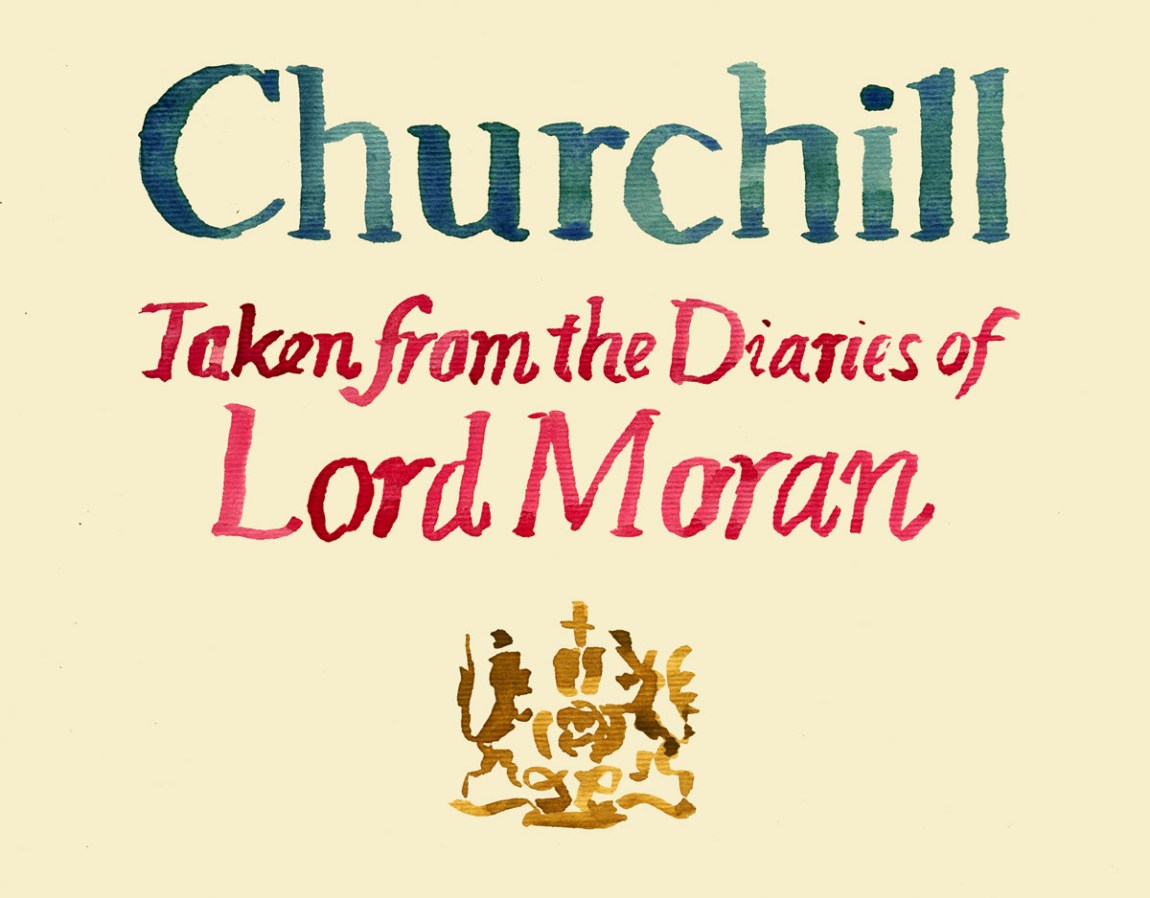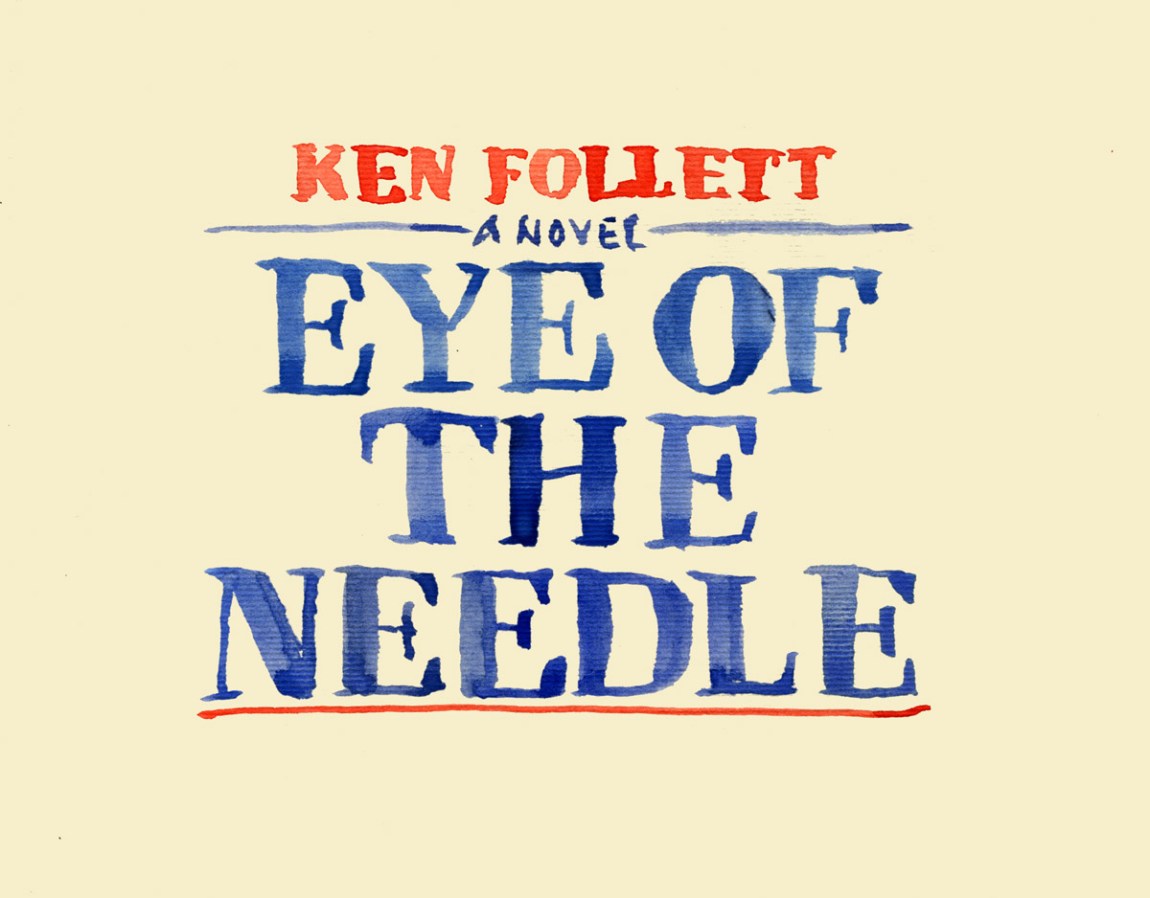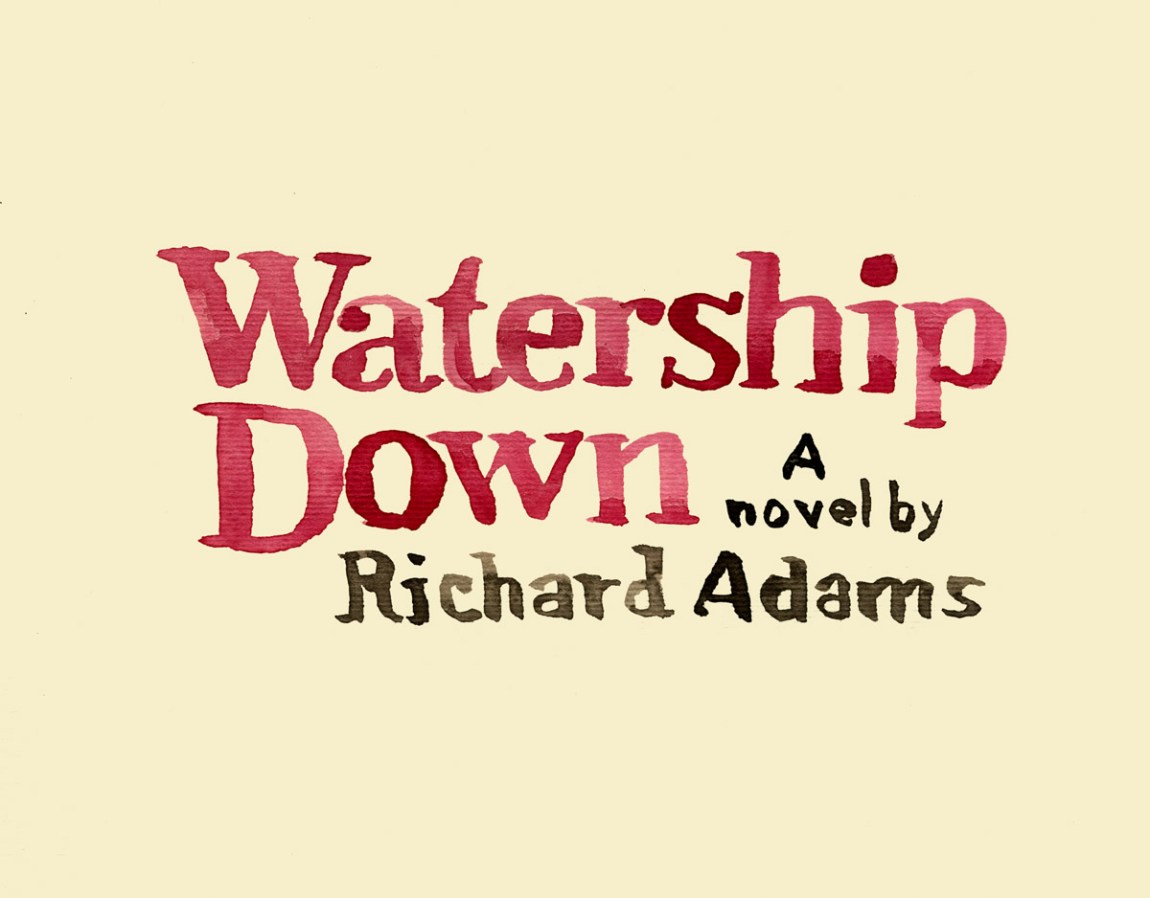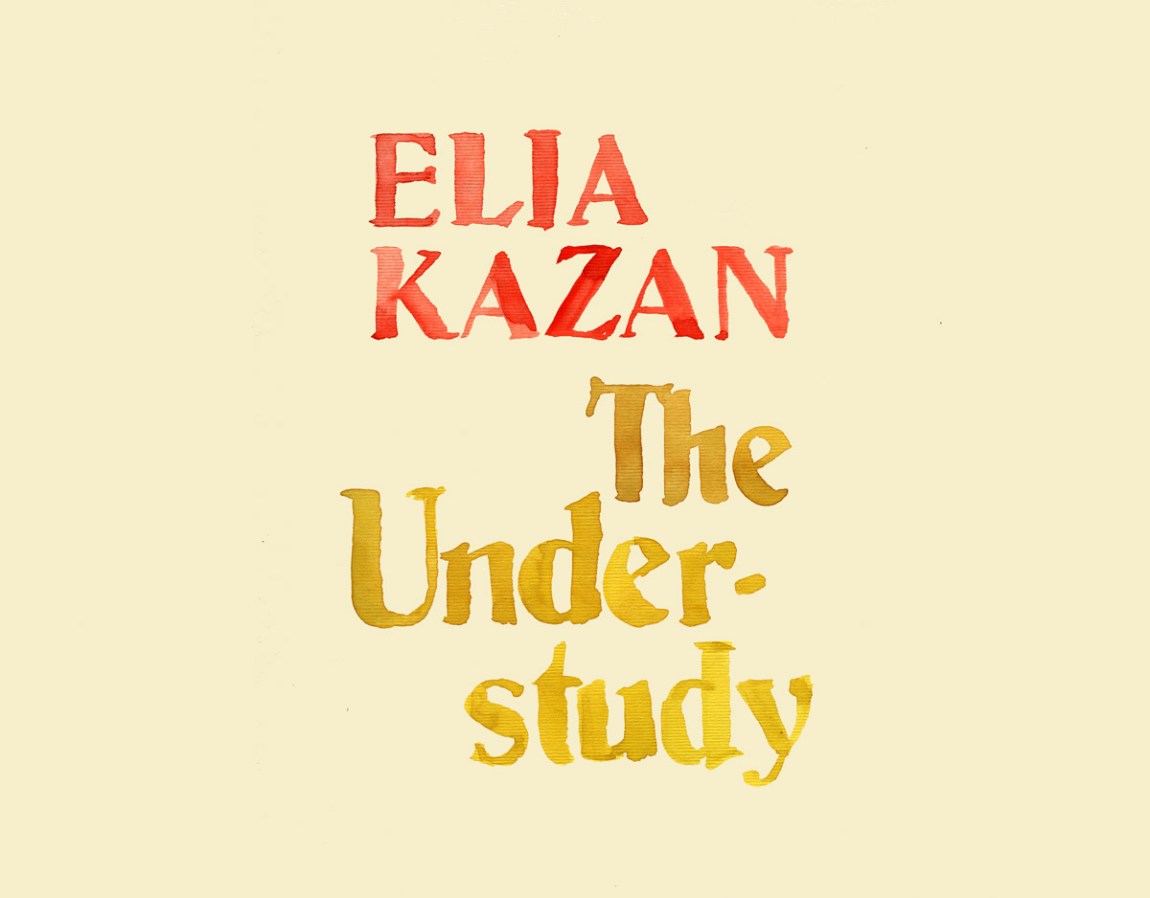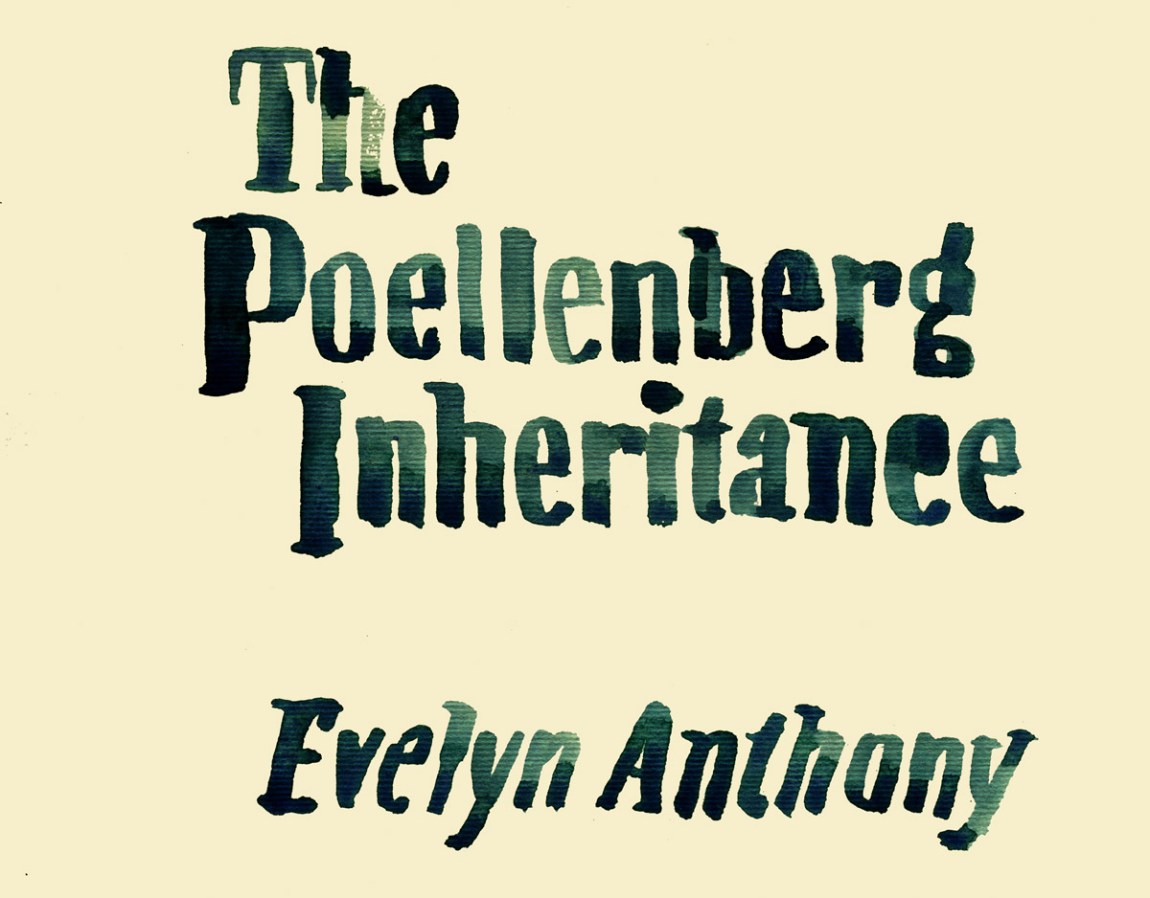It’s the last week of summer, and our thirty-sixth art newsletter comes via the bookcase of a summer rental in Woods Hole, Massachusetts, where my daughter and I stayed as guests. The books on the shelves, mostly hardcovers, were all at least twenty-five years old, and I was struck by how many of them employed serif fonts on their jackets. So I painted them.
Our Fall Books Issue is one of the four issues each year for which we commission an illustrator to design and letter the cover. For this one, though, I asked a graphic designer: Matt Willey, who previously worked on the Review’s redesign in 2021. His cover is a tribute to his father, Nick, who was a poet and longtime subscriber to the Review; Willey remembers the magazine being a feature around his father’s study when he was growing up. On the cover, his painted trees were made with the same Rotring inks with which his father drew, and Willey typed out the coverlines using a Smith-Corona Sterling typewriter. (An interview with Matt about his cover will be published on Saturday.)
The issue opens with a review by Trevor Jackson of two books that address the immense challenges that the changing climate will bring to human civilization: Abundance by Ezra Klein and Derek Thompson and Overshoot by Andreas Malm and Wim Carton. I thought first of Tom Bachtell and his sharp ink portraits. He gave us a blindfolded planet earth, in fiery orange and red, stumbling amid the four writers.
For Mark O’Connell’s incisive review of The Technological Republic: Hard Power, Soft Belief, and the Future of the West, by Alexander C. Karp and Nicholas W. Zamiska, I thought of George Wylesol, whose clean, flat line could be appropriate. He sent three sketches, all of them cool and admonitory, and we opted for his depiction of a computer desktop displaying both military and marketing imagery.
Two—actually, three—of my favorite artists came together in Lorrie Moore’s review of Miriam Toews’s new memoir. I first read Toews twenty-five years ago in Paul Tough’s early Internet publication Open Letters. It was an online magazine that collected first-person epistolary writing—a sort of bellwether for blogs and then Substack—in the intimate style of This American Life. Toews’s letters were my favorite, a new voice and style I’d never encountered. I’ve read everything she’s written since. I was eager to ask the Bristol-based Harriet Lee-Merrion, who had just finished maternity leave, to make a portrait of Toews. She drew her in a forthright, seated composition. In the second paragraph of Moore’s review, she writes about Toews’s “bright, precise voice of indignation…distilled from ‘bone-deep rage’”—a perfect description that would have sold me on the book if I hadn’t already planned on buying it.
Linda Greenhouse writes about four books in her essay covering the millennia-long history of abortion. The Massachusetts-based artist Emma Kohlmann often paints women who look as though they are grappling with the weight of history, and I thought that her 2021 painting Caged Nightmare might illustrate a point Greenhouse makes at the end of the essay that restricting abortion confines women as a class. Kohlmann sent a hi-res picture of her painting in the busy moments before she opened her solo show at Silke Lindner gallery in New York City, which is up until October 4.
When I looked up photos of Michael Lentz, who wrote Schattenfroh: A Requiem, which Anahid Nersessian reviews, I thought that Harry Bliss might make a good portrait.Bliss is best known for his dog cartoons, but back in April he drew Charles Ferdinand Ramuz for us, and I wanted to see what he’d do with another hard-nosed writer. He turned in, four days ahead of deadline, a tender profile of Lentz set against the bombed-out town of Düren.
Grant Shaffer e-mailed me five slightly different portraits of Patrick Modiano for Ruth Margalit’s review of the French writer’s newly translated novel Ballerina. I sent my favorites to the editors, who picked a sharpish Modiano, gentle but glaring.
I’d used up my commissioning budget before I got to Kwame Anthony Appiah’s essay about free speech, so I spent a few days looking for fine art that didn’t involve the usual visual metaphors of megaphones and speech bubbles. The editors rejected everything I sent. I finally found, buried in Julien Posture’s Instagram feed, an unpublished image that got the green light. When I got hold of Posture, he couldn’t find the hi-res file in his hard drive, explaining that the image was “old and unfortunately predates my learning of good archival practice.” Then he added, “If you want, I can whip up a new version quickly.” I told him it was a deal.
The series art, titled “Free Oscillation,” is by Megan Barron, an artist, writer, and volunteer firefighter and EMT who lives two cottages away from where my kid and I spend part of the summer in the North Fork community on Long Island.

